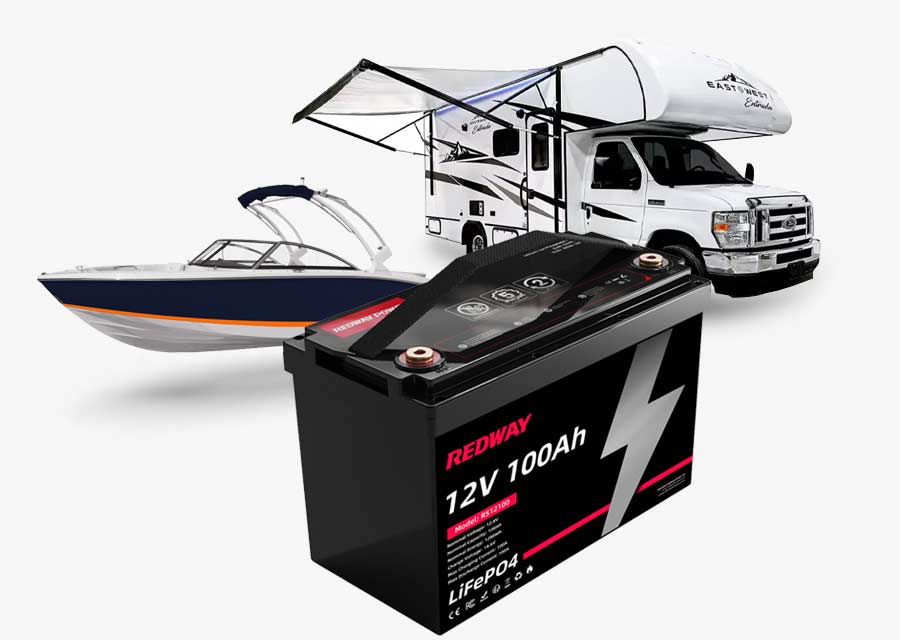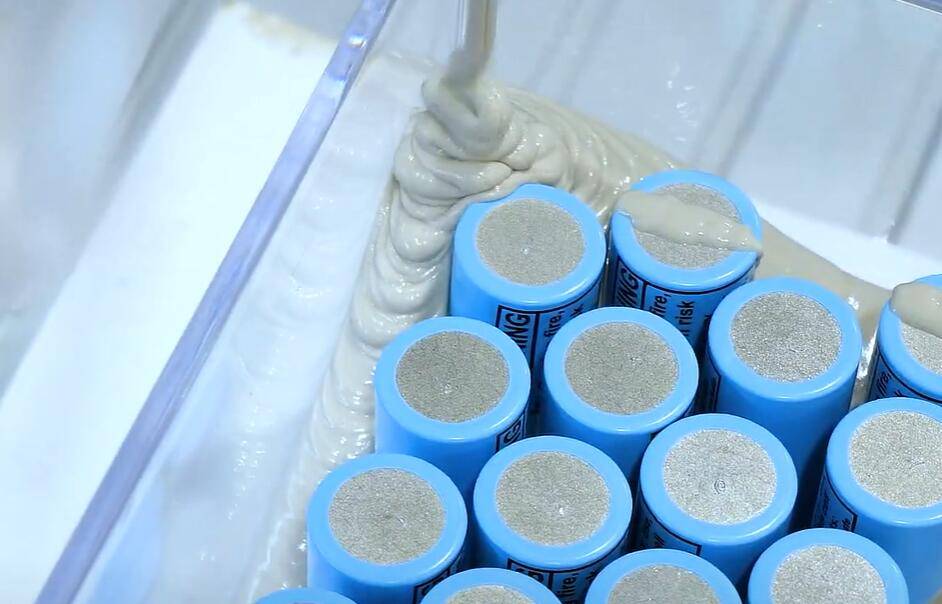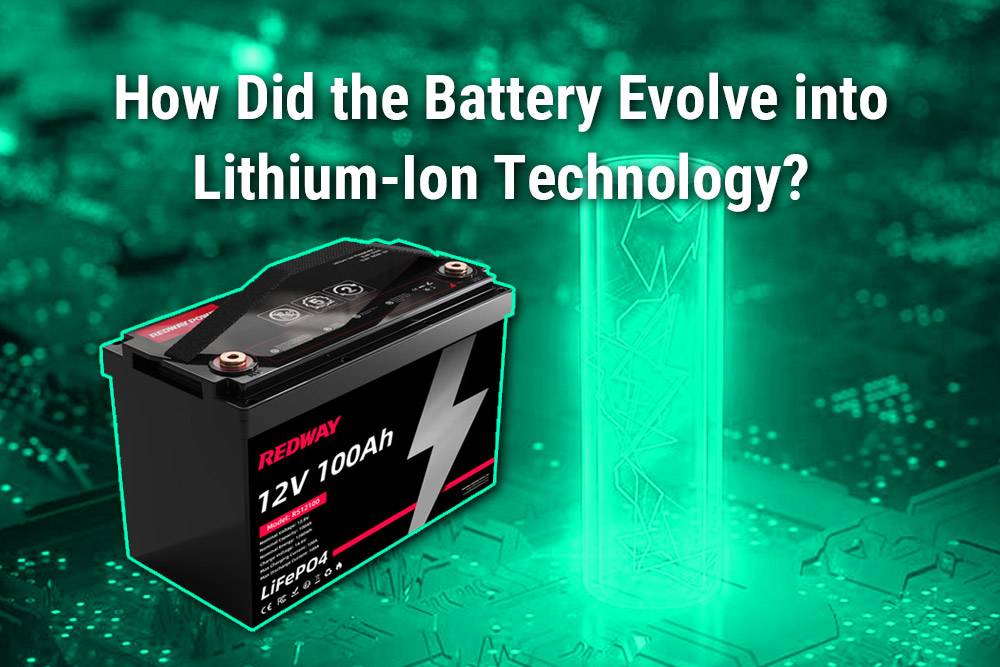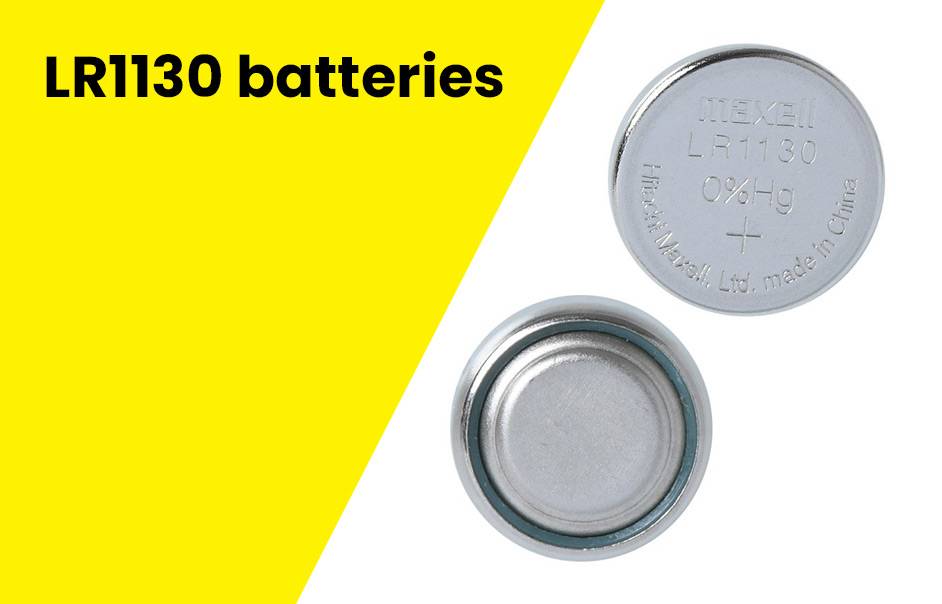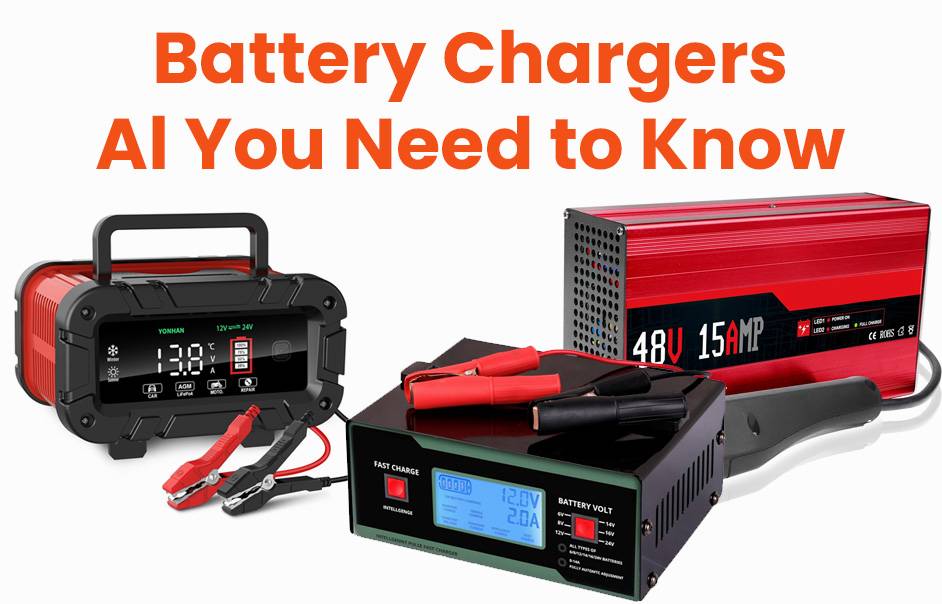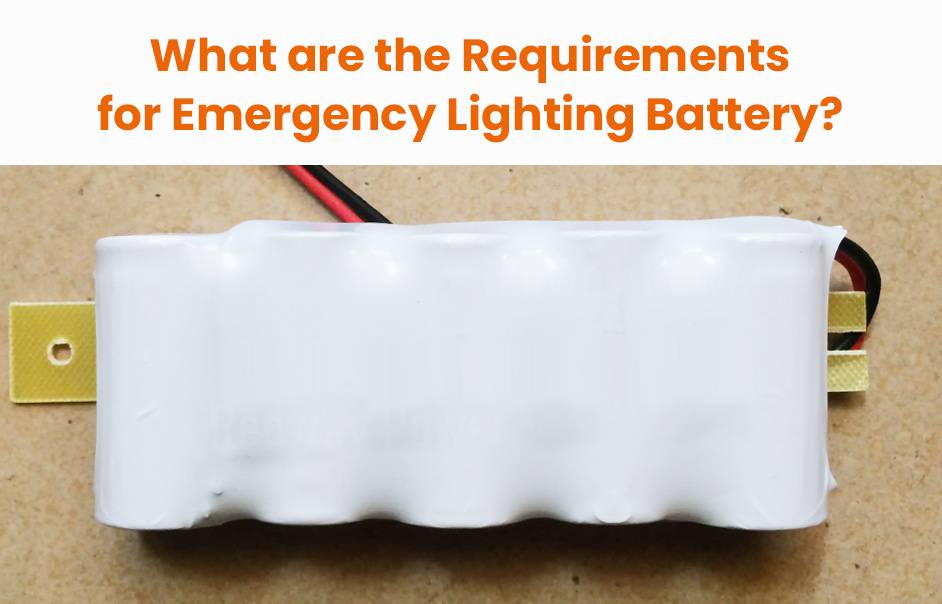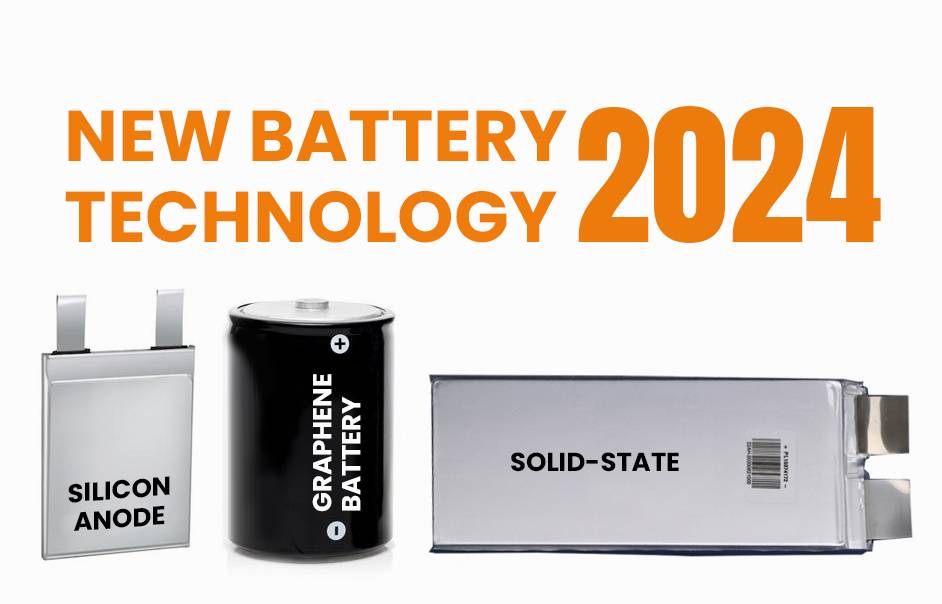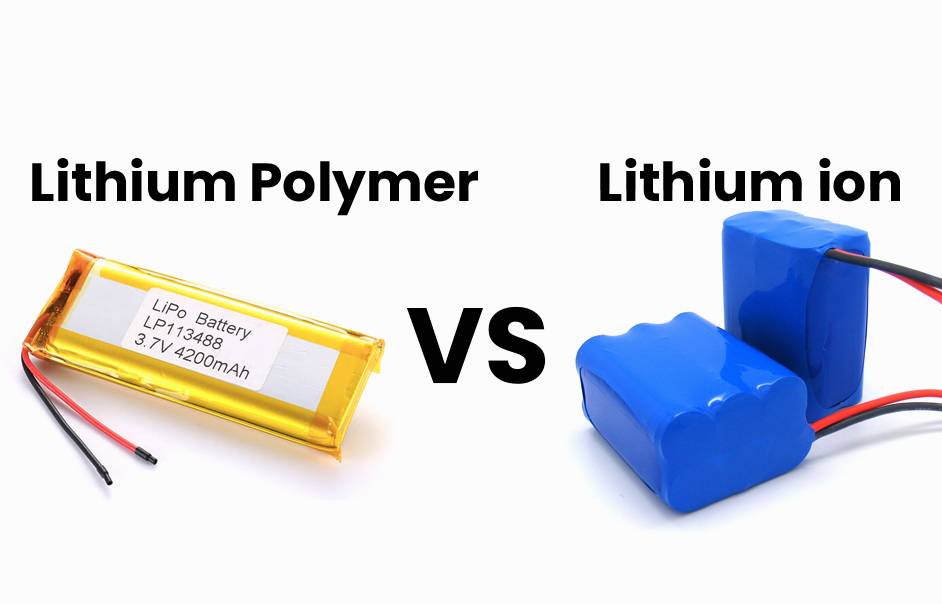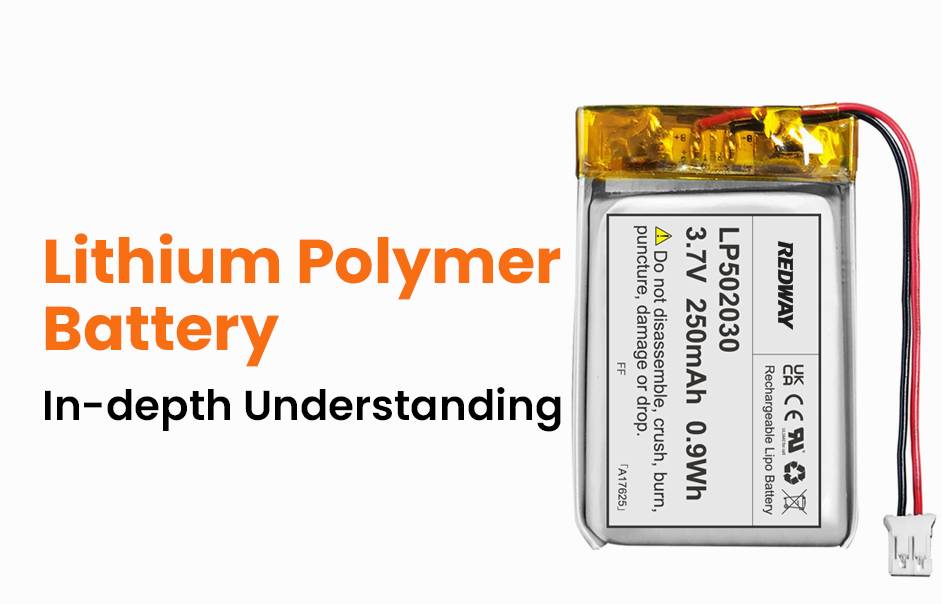Ready to boost your knowledge on battery potting and encapsulation? Meet Redway Power, the lithium battery manufacturer transforming the industry with innovative potting glue application. This blog explores the importance of battery potting, highlights Redway Power’s groundbreaking technique, shares real-life case studies, and glimpses into the future of this exciting technology. Get ready to be amazed at how Redway Power is elevating batteries to new heights!
Importance of Battery Potting & Encapsulation in Lithium Batteries
Lithium batteries play a crucial role in powering various devices, but they are susceptible to environmental factors. Battery potting and encapsulation provide essential protection against moisture, temperature fluctuations, and physical damage.
- Potting and Encapsulation Overview: Potting involves filling spaces around sensitive battery components with protective materials like epoxy resin or silicone. Encapsulation takes it further, fully coating the entire battery module, safeguarding against external elements that may compromise performance and lifespan.
- Benefits of Potting and Encapsulation:
- Enhances resistance to moisture, mechanical shock, vibration, and thermal stress, preventing short circuits during operation or transportation.
- Acts as insulation material, reducing electrical leakage and the risk of corrosion, thereby improving overall efficiency and maintaining consistent performance.
- Safety and Compliance:
- Potting and encapsulation contribute to increased safety standards by reducing the risk of thermal runaway events, ensuring reliable performance under demanding conditions and adhering to strict regulations.
- Innovation by Redway Power:
- Redway Power addresses industry challenges with cutting-edge potting glue application, setting them apart in revolutionizing the lithium battery industry.
- Stay tuned as we delve into how Redway Power’s advanced methods redefine efficiency and safety in battery design and production.
Advantages of Redway Power’s Potting Glue Application
Lithium batteries are indispensable for various applications, but environmental factors pose challenges. Battery potting and encapsulation are key solutions, protecting against moisture, temperature fluctuations, and physical damage.
- Essential Protection:
- Potting fills spaces around components with materials like epoxy resin, while encapsulation fully coats the battery, preventing performance compromise.
- Performance Benefits:
- Enhancing resistance to moisture, shock, vibration, and thermal stress, these methods ensure reliable, efficient, and consistent battery performance.
- Safety and Compliance:
- Contributing to heightened safety standards, potting and encapsulation minimize the risk of thermal runaway events, meeting stringent regulations.
- Innovation by Redway Power:
- Redway Power’s cutting-edge potting glue application revolutionizes the lithium battery industry, addressing challenges and redefining efficiency.
In conclusion, Redway Power’s innovative methods mark a turning point in battery design, ensuring reliability and safety in the face of evolving technological demands.
Case studies of successful battery potting at Redway Power
Discover how Redway Power’s innovative potting glue application achieves remarkable success in diverse industries. Two case studies showcase the effectiveness of this technique in enhancing the performance and longevity of lithium batteries.
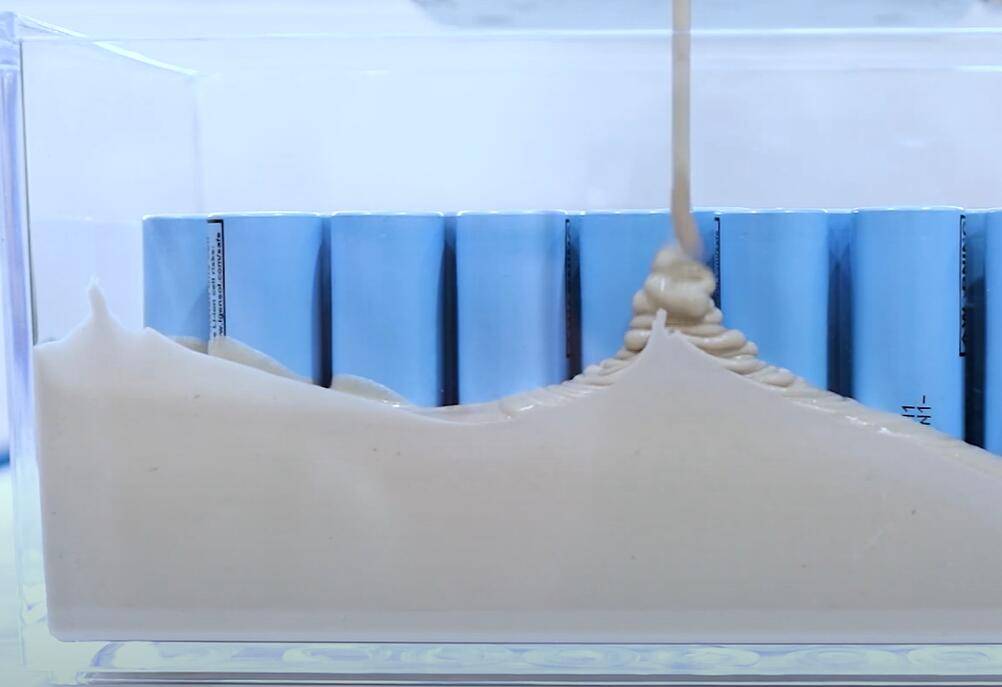
- Electric Vehicle Battery:
- Redway Power collaborated with a leading electric vehicle manufacturer to fortify lithium battery packs against extreme conditions.
- Advanced potting glue application resulted in improved thermal management, reduced cell stress, and a substantial boost in battery performance and lifespan.
- Renewable Energy Storage System:
- Working with a renewable energy company, Redway Power optimized lithium batteries used for storing solar-generated excess energy.
- Targeted application of potting glue eliminated risks of leakage or short-circuiting, leading to increased energy storage capacity and improved system reliability.
- Success Across Industries:
- These case studies exemplify Redway Power’s tailored solutions, overcoming unique challenges in various high-performance lithium battery applications.
- Continued advancements in materials science and technology-driven innovation promise further breakthroughs in battery potting techniques.
In conclusion, Redway Power’s cutting-edge potting glue application continues to redefine standards in the lithium battery industry, ensuring reliability and efficiency across diverse applications. Stay tuned for more updates on their groundbreaking approaches!
The future of battery potting and encapsulation technology
Explore the promising future of battery potting and encapsulation technology and its impact on the lithium battery industry. Redway Power, a trailblazing lithium battery manufacturer, leads this innovation with cutting-edge techniques, foreseeing advancements that will redefine battery performance and reliability.
- Advanced Potting Glue Formulations:
- Redway Power pioneers unique potting glue formulations, ensuring exceptional adhesion, insulation, and improved thermal conductivity in lithium batteries.
- Focus on nanomaterials within potting glues enhances heat dissipation, reduces overheating risks, and extends battery lifespan while providing superior resistance to environmental factors.
- Automation in Potting Processes:
- The future sees the integration of robotics and advanced machinery for precise dosing and uniform application of potting glue across multiple battery cells simultaneously.
- Automation not only enhances efficiency but also ensures consistent quality throughout the battery production process.
- Material Science Advancements:
- Ongoing research aims for environmentally friendly potting glues without compromising performance or safety standards, promising even better-performing materials.
- Continued innovation in material science will contribute to the development of sustainable options for battery potting.
- Smart Technologies in Encapsulation:
- The future involves integrating smart technologies into battery encapsulation processes, incorporating sensors to monitor temperature fluctuations and detect potential faults early on.
- This proactive approach enhances overall safety and reliability in lithium battery systems.
In conclusion, the future of battery potting and encapsulation technology holds immense potential, driven by innovations from leaders like Redway Power. Anticipate significant improvements in lithium battery performance and reliability across various industries with ongoing advancements in this dynamic field.
Conclusion: How Redway Power is revolutionizing the lithium battery industry through their potting glue application
Redway Power’s potting glue application has ushered in a new era for the lithium battery industry, providing unparalleled innovation in manufacturing. In this conclusion, we highlight the significant impact of Redway Power’s revolutionary technique on battery performance and reliability.
- Critical Role of Potting Glue:
- Redway Power recognizes the importance of battery potting and encapsulation in shielding lithium batteries from environmental factors, ensuring protection against moisture, dust, and vibration.
- Their specialized potting glue not only offers exceptional adhesion but also enhances overall battery performance, securing components even under extreme conditions.
- Advantages of Redway Power’s Potting Glue:
- Superior adhesion properties prevent internal damage by securely holding components in place, crucial for reliability in demanding applications.
- Creating a hermetic seal around battery cells, Redway Power’s potting glue extends battery lifespan by preventing moisture ingress and maintaining capacity over time.
- Excellent thermal conductivity minimizes the risk of overheating during charging and discharging cycles, promoting both safety and prolonged battery life.
- Success Across Industries:
- Redway Power’s success is evident in case studies spanning diverse industries – electric vehicles, renewable energy systems, medical devices, and aerospace technology.
- Their expertise in developing customized solutions tailored to specific requirements underscores the versatility and effectiveness of their potting glue application.
- Future Developments:
- Looking ahead, the future of lithium battery development hinges on advanced potting techniques for maximizing performance, durability, and safety standards.
- Ongoing research efforts focused on enhancing materials used in encasing batteries emphasize Redway Power’s commitment to continuous innovation.
In conclusion, Redway Power’s commitment to pushing the boundaries of innovation through continuous improvement in their potting glue application process positions them as a driving force in the evolution of lithium battery technology.
Potting Application for Battery Pack Production
As the automotive industry races to achieve net-zero emissions targets through a massive shift to electrification, ensuring battery safety remains one of the most critical prerequisites for mass adoption of electric vehicles, and therefore a top priority for OEMs and battery manufacturers. With reports of various electric vehicles catching fire under different circumstances, manufacturers, consumers and regulators are focusing on the topic of fire protection and battery safety, and are increasingly concerned about the safety of passengers and the road.
